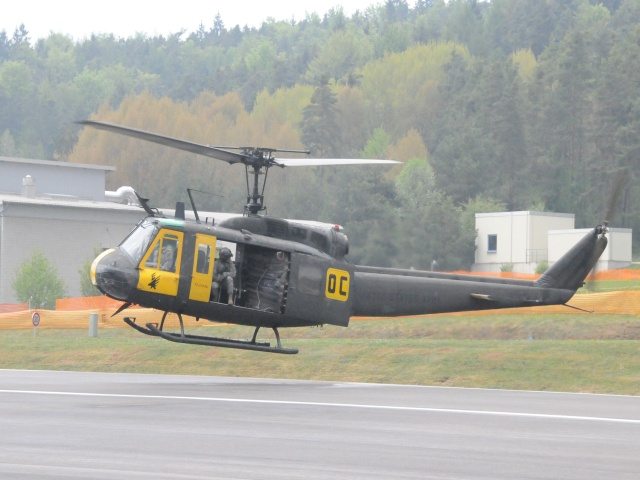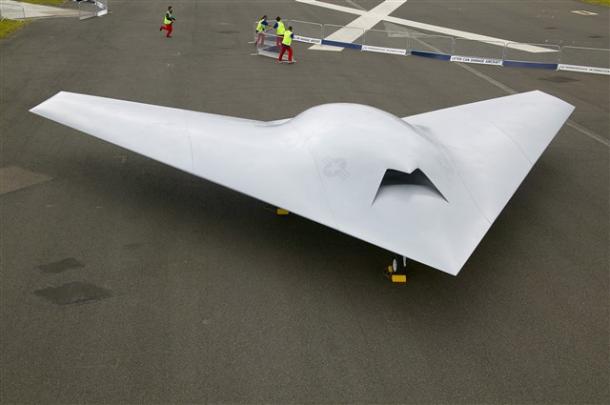Rotors ripping the air, four UH-1 Iroquois helicopters soared above Hohenfels for the last time at a retirement ceremony for the aircraft, April 27, 2011.
A total of 10 “Hueys” have served at Hohenfels over the past 40 years, most recently as training aids for the Joint Multinational Readiness Center.
“This is the last of the Hueys in service in U.S. Army Europe,” said Col. John M. Spiszer, JMRC commander.
The original designation for the aircraft was HU-1 which led pilots to nickname it “Huey.” Though the designation was later changed to UH-1, the term Huey stuck.
Medal of Honor recipient retired Col. Bruce Crandall attended the ceremony as the guest of honor. Crandall, whose story was dramatized in the Mel Gibson film “We were Soldiers,” led the first major division operation of airmobile troops into Landing Zone X-ray in Vietnam’s la Drang Valley on Nov. 14, 1965.
Under extreme enemy fire, Crandall completed 22 flights in his unarmed Huey, evacuating some 70 wounded Soldiers and providing ammunition to the troops on the ground.
“I fell in love with the Huey the moment I got in,” Crandall said. “I bet most guys who flew it felt like that.”
Crandall praised not only the Huey’s versatility, but also its toughness.
“It would take a hell of a beating and keep flying,” he said. “On Nov. 14, half the ships were shot up. I changed helicopters and the next lift got shot up some more, and I went back to the first one. All you needed was enough duct tape to cover the holes.”
The Army began phasing out the Huey’s in the ’80s with the introduction of the UH-60 Black Hawk helicopter. With the introduction of the smaller, quieter, and more maneuverable UH-72A Lakotas, the retirement of the Army’s fleet of Hueys has accelerated. The Lakota is also replacing the UH-1 at the Joint Multinational Readiness Center..
Several guests took part in some final flights throughout the day, including Mayor Peter Braun of Schmidmuehlen.
“I was born near Hohenfels in Schmidmuehlen, and the whole time as a child till now, I hear the helicopters,” Braun said. “Now, the helicopters go, and it is a bit sad. I am going to miss them.”
Hohenfels Middle/High School science teacher Randall Roberts also enjoyed one of the last flights. Roberts flew Hueys for 15 years during his military career.
“It’s an emotional moment for me,” Roberts said. “I loved the Huey. It’s so friendly to fly. You could do every emergency procedure in the world and still recover in the Huey. I never thought I’d be in one again. It’s an extreme honor, but it’s a melancholy honor.”
The four helicopters flew to Ramstein Air Force Base after the ceremony where they will be airlifted to Florida, then rebuilt into dual-engine Huey 2S, and returned to service with the Department of State Air Wing.
Lt. Col. Brian Dillon, Joint Multinational Readiness Center senior aviation observer controller, said, “As we bid farewell to the UH-1 today, we’ll hold on to the legacy of the pilots and crew chiefs who flew her and kept her in the air.”
“It took men like Colonel Crandall to turn the UH-1 into an iconic aircraft. The UH-1 became a legendary aircraft because it was flown by legends,” he added.
Crandall said he has attended several retirement ceremonies for the Huey, even going up in the final flight at Yakima Training Center in Washington last February.
Many Hueys are still in use today, in foreign military as well as civilian service. The 78-year-old Crandall predicted the Huey will be in use somewhere for another 50 years.
“If I get to fly the last Huey, I’ll be 110 years old,” he joked.











